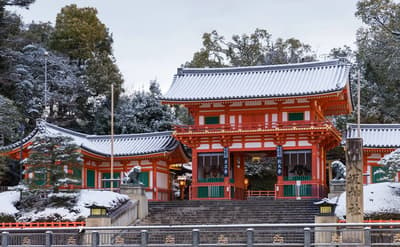Kinkaku-ji Temple, Kamigamo Jinja Shrine, and Ryoan-ji Temple are located near the foot of Mt Kinugasa. The area is a bit far from the city center, and there are few restaurants or souvenir stores. It is a particularly good sightseeing spot for those who want to visit temples and shrines in a relaxed atmosphere.
The sightseeing road that circles the three World Heritage sites from Kinkaku-ji Temple to Ryoan-ji Temple and Ninna-ji Temple is called “Kinukake-no-michi” and is approximately 2.5 km long with lush greenery. You can also take the Randen train from Omuro-Ninnaji Station near Ninna-ji Temple to the Arashiyama area, and spend a day fully enjoying the history and nature of Kyoto.
In this issue, we will introduce such classic spots around Kinkaku-ji Temple, Kamigamo Jinja Shrine, and Ryoan-ji Temple!
Kinkaku-ji Temple (金閣寺)
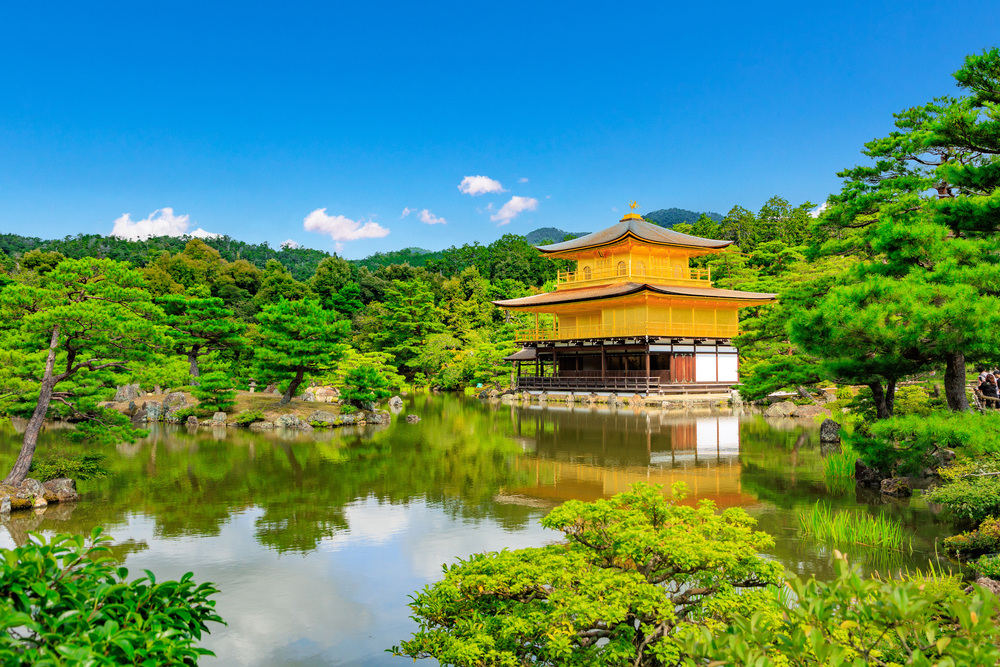
Kinkaku-ji Temple is the first temple that many people think of when they hear the word Kyoto. Although the temple is officially called “Rokuon-ji”, it came to be called “Kinkaku-ji” because of the famous golden “Kinkaku” building on the temple grounds.
Visitors can enjoy the seasonal beauty of the temple, the “upside-down Golden Pavilion” reflected in mirror pond, and the Chisen Kaiyu style garden (a style of Japanese garden with a path around a central pond and spring), all of which are beautiful no matter what time of year you visit. The symbol of Kinkaku-ji, the Golden Pavilion, is not open to the public. Enjoy the view from outside.
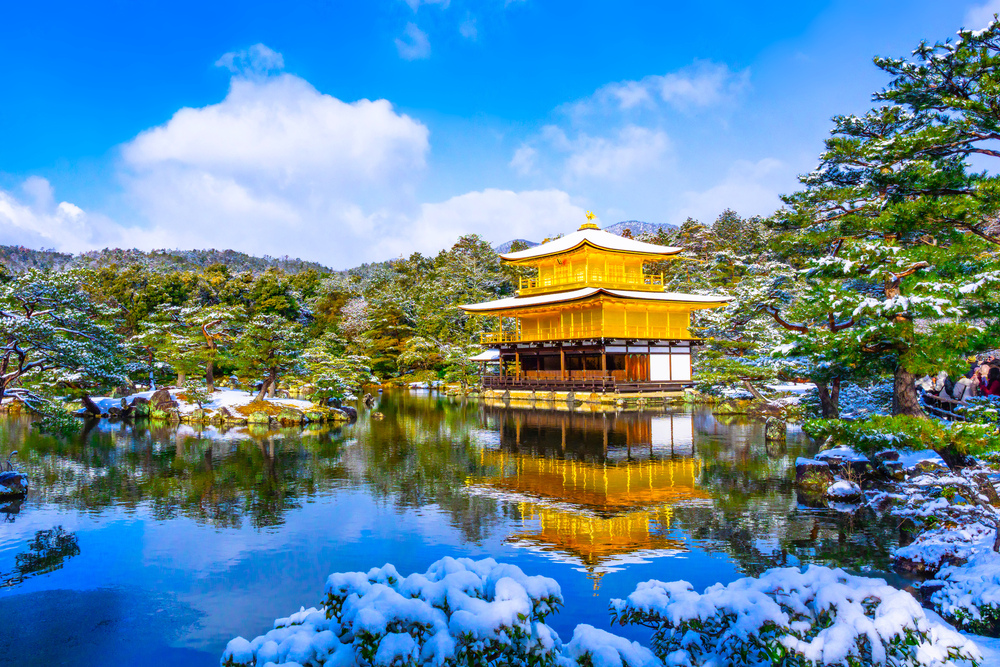
Kinkaku-ji Temple is beautiful in any season, but it is especially special when it is covered with snow. Kyoto is not an area where it always snows in the wintertime, so you will only be able to appreciate this view for a few days a year. If it snows in Kyoto while you are visiting Japan, you should definitely run to Kinkaku-ji Temple.
Ryoan-ji Temple (龍安寺)
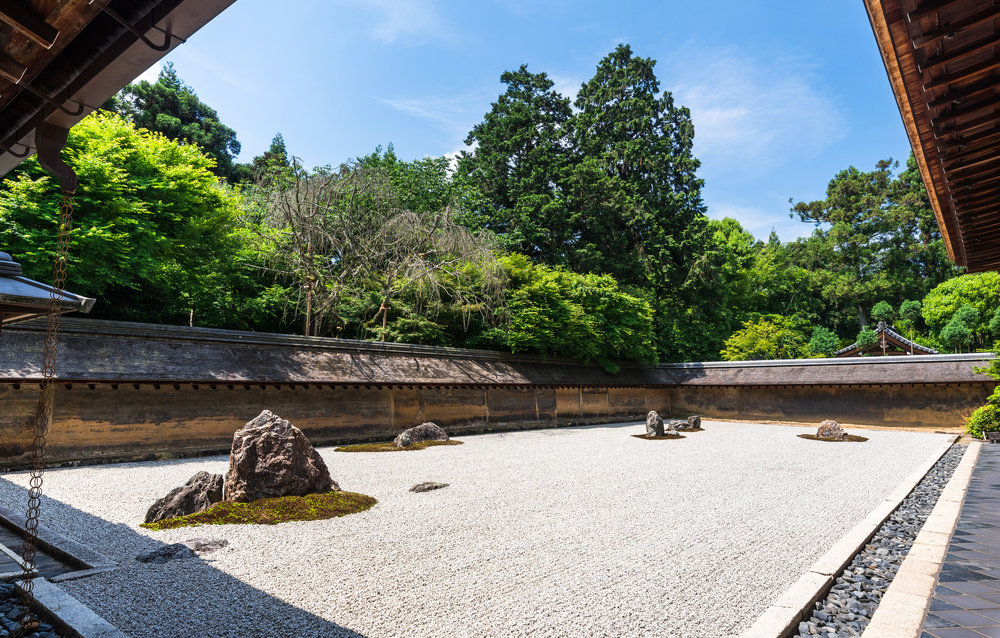
Ryoan-ji Temple, registered as a World Heritage site, is famous for its rock garden called karesansui (dry landscape garden). Karesansui is a Japanese garden that uses only sand and stones to create a landscape of mountains and water without any water. Karesansui at Ryoan-ji Temple became world famous as a “rock garden” after Queen Elizabeth II of England praised it highly when she visited Kyoto.
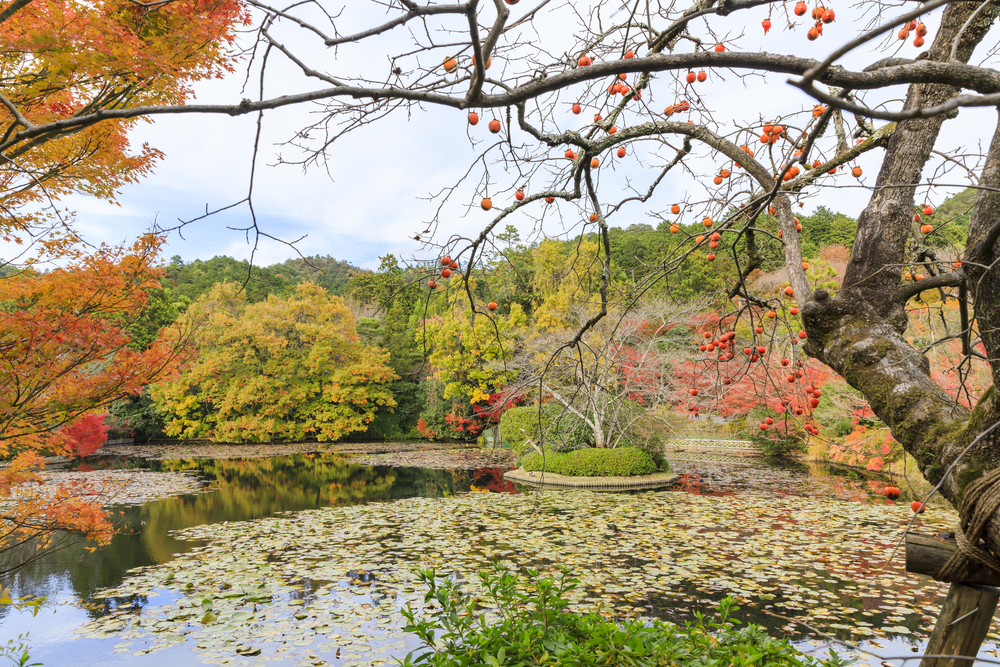
In the garden, which occupies about half of the temple grounds, there is a large pond called Kyoyouchi Pond, where visitors can enjoy a variety of natural beauty: cherry blossoms in spring, water lilies in summer, autumn leaves in fall, and snow in winter.
The simple garden of a Zen temple based on the spirit of “Wabi-Sabi” and the gorgeous garden decorated with flowers of the four seasons. The two different gardens are the main attractions of Ryoan-ji Temple.
Ninna-ji Temple (仁和寺)


Ninna-ji Temple is a temple with many famous spots in its spacious grounds. The Niomon Gate, an important cultural asset, the five-story pagoda, and the Kannon Hall. The Kondo Main Hall, a national treasure, and the “North and South Gardens,” which are designated as national scenic beauty spots, are just a few of the many highlights.

The seasonal scenery at Ninna-ji Temple is also spectacular. The Omuro-sakura (cherry blossoms), which are said to bloom later than any other cherry blossom in Kyoto, are a stunningly beautiful collaboration with the five-story pagoda. Since the best time to see the cherry blossoms is around mid-April, many visitors come to the temple to finish the cherry blossom viewing season.

Although not as famous as the cherry blossoms, the autumn foliage season is not to be missed. Visitors can enjoy the autumn leaves along the approach to the Kondo Main Hall and in the reflection of the pond in the north garden, as well as in various other places on the grounds.
Hirano Jinja Shrine (平野神社)
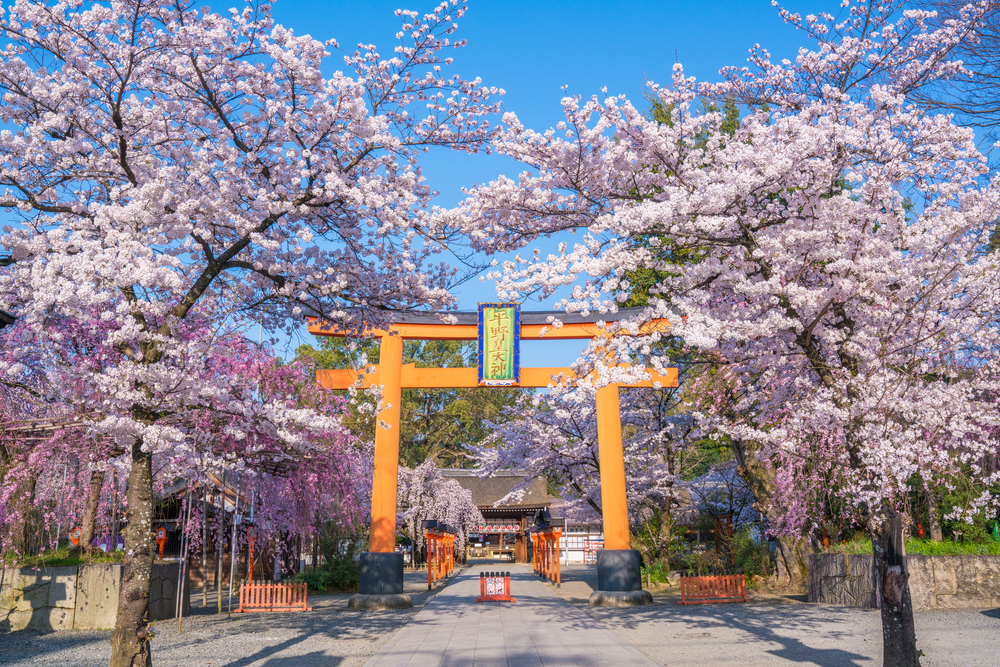
Hirano Jinja Shrine is famous for its cherry blossoms, with approximately 400 trees of 60 varieties planted on the grounds. During the cherry blossom season, the shrine is illuminated at night, allowing visitors to enjoy the beautiful nighttime cherry blossoms. The variety of cherry trees means that there is a long period of time when the cherry blossoms are at their best.

The “Okasai” held in April is also famous, with a procession of people dressed in traditional costumes, including samurai warriors, parading through the shrine area.
Kitano-Tenmangu Shrine (北野天満宮)
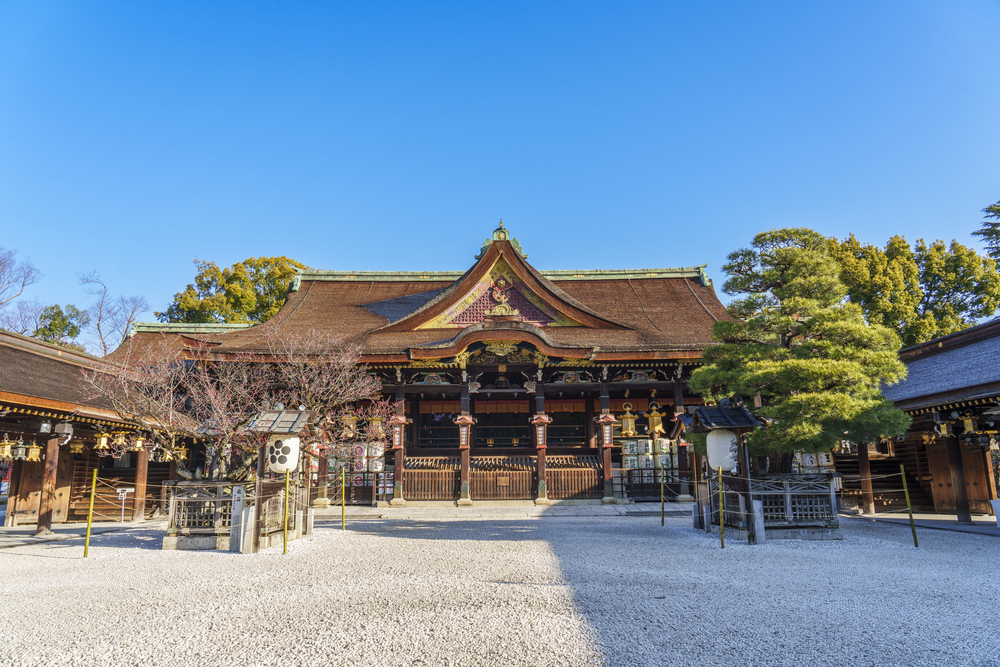
Kitano-Tenmangu Shrine is the head shrine of Tenmangu, one of the 12,000 Tenmangu shrines in Japan. The shrine is dedicated to Sugawara Michizane, known as the god of learning, and is visited by many students preparing for entrance exams.
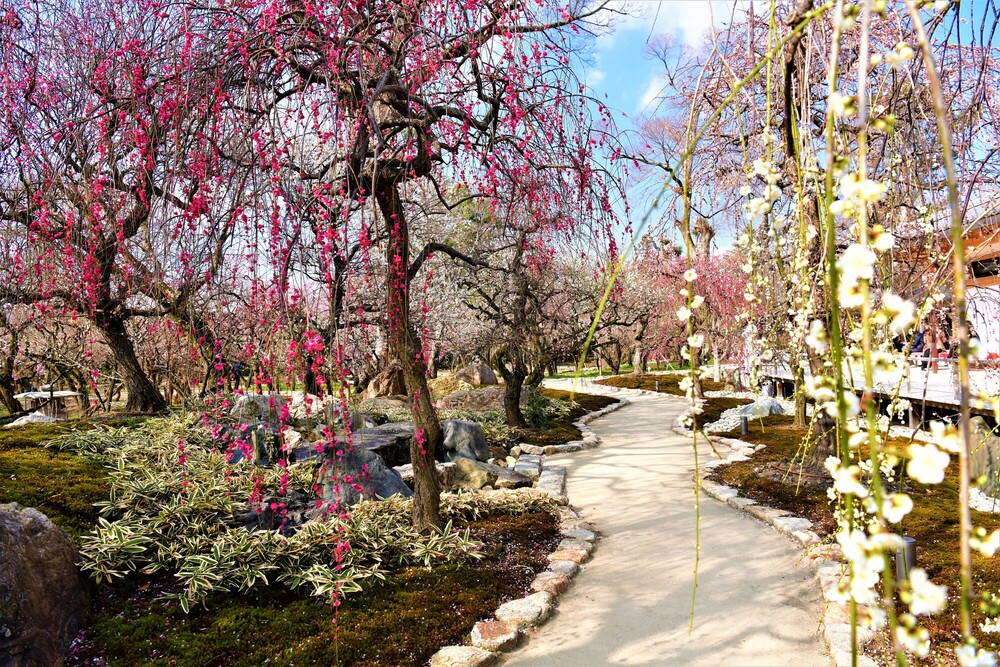
Kitano Tenmangu Shrine is also famous for its plum blossoms and autumn leaves. The “Ume Garden”(Plum blossom garden) has about 1,500 plum trees of 50 varieties. The earliest ones start blooming in early January. Since the blooming period varies, visitors can enjoy plum blossoms for a long time until the end of March.
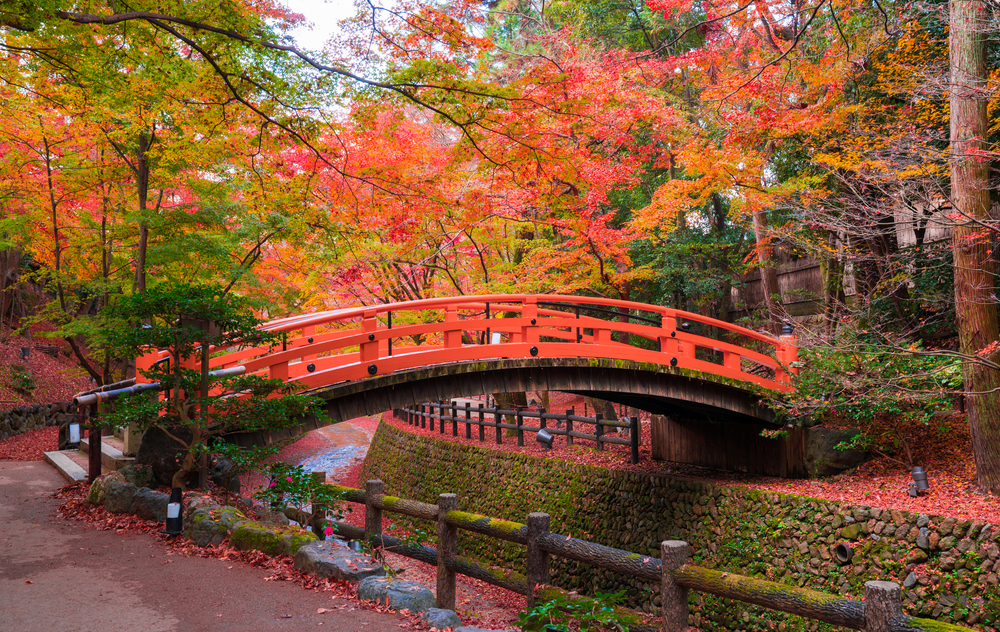
In the “Momiji-en” (autumn maple garden) ,about 350 maple trees change color in autumn. The autumn leaves of the maple trees are beautiful, but we also recommend viewing the green maples during the season of fresh green leaves.
When the plum and maple gardens are open to the public, visitors can enjoy a different kind of Kitano Tenmangu Shrine than usual, such as tea ceremonies at the tea ceremony hall and lighting events.
Kamigamo Jinja Shrine (上賀茂神社)
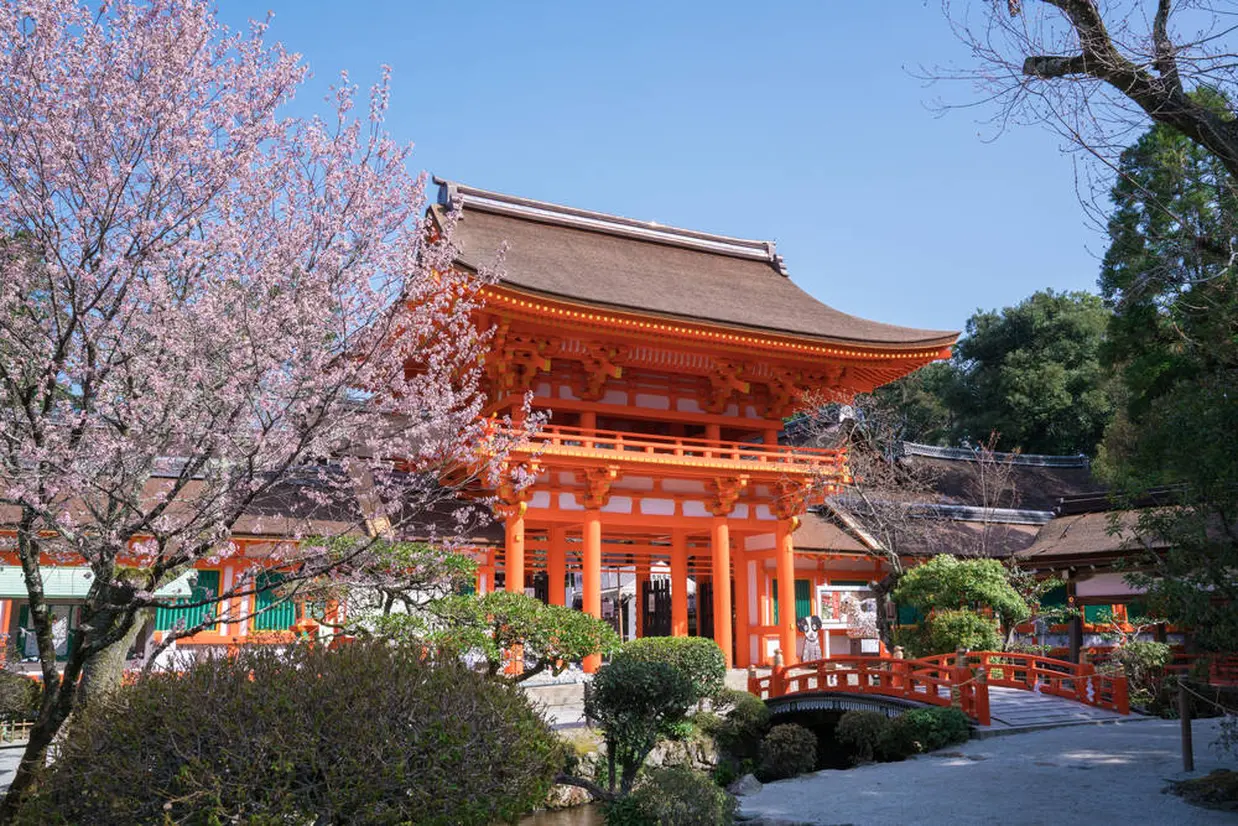
Kamigamo Jinja Shrine is officially called Kamo Wakeikazuchi Jinja Shrine. The word “Wakeikazuchi” means “god so powerful that he can separate thunder” and has been worshipped since ancient times as a god to ward off evil and misfortune, and to ensure victory. The extensive grounds, which include two national treasures and 41 important cultural properties, are all registered as a UNESCO World Heritage site.
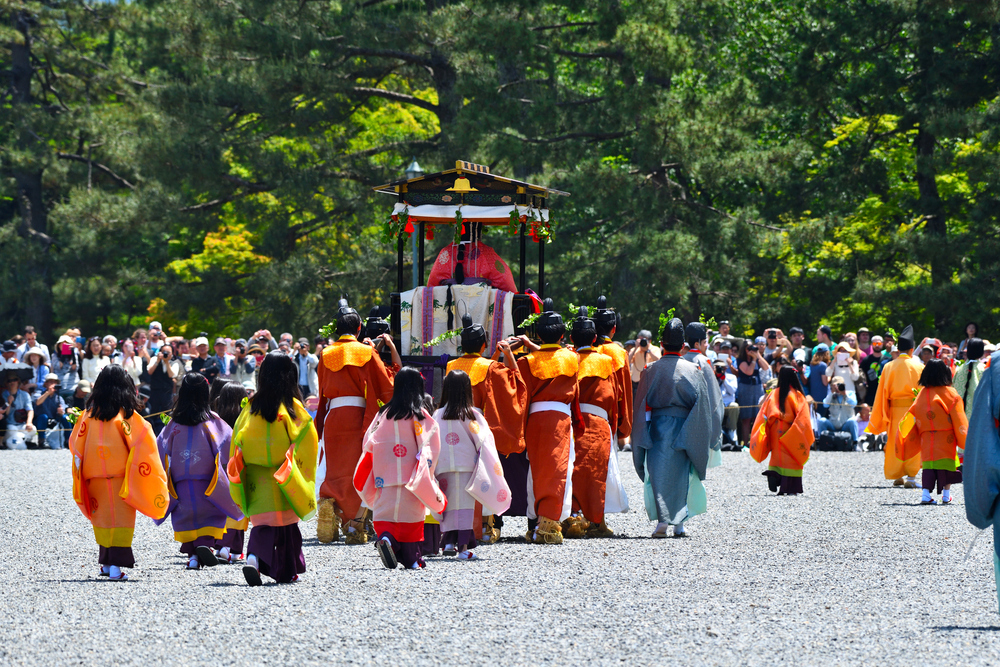
Kamigamo Shrine is also the site of the famous Aoi Matsuri festival in Kyoto. The Aoi Matsuri is an annual festival of the Kamomioya Jinja Shrine (Shimogamo Jinja Shrine) and the Kamo Kamo Wakeikazuchi Jinja Shrine (Kamigamo Jinja Shrine) that began more than 1,500 years ago, and is held in May.Various events are held starting in May, and on May 15, visitors can see an 8-km-long procession of people dressed in the costumes of Heian aristocrats.
Jyobonrendai-ji Temple (上品蓮台寺)

Jyobonrendai-ji Temple is a well-known cherry blossom viewing spot. The weeping cherry trees blooming in the precincts of the temple are very beautiful and add color to the temple grounds in spring. Although the temple is of great historical and cultural value, it is not a tourist-oriented place, so be sure to appreciate it in peace and quiet.
Funaoka Onsen Town (船岡温泉街)
Funaoka Onsen Street is a 20-minute walk from Kinkaku-ji Temple. It refers to the area around Kuramaguchi Street in Murasakino, Kita-ku. Centered around “Funaoka Onsen,” which is legendary among public bathhouse fans, the area is dotted with super retro stylish cafes that were converted from former bathhouses, Michelin-listed soba noodle restaurants, and other stores that are worth the long trip. Perhaps because access to the area is a bit inconvenient, it is said to be a hidden gem, but it is also visited by many tourists from abroad.


